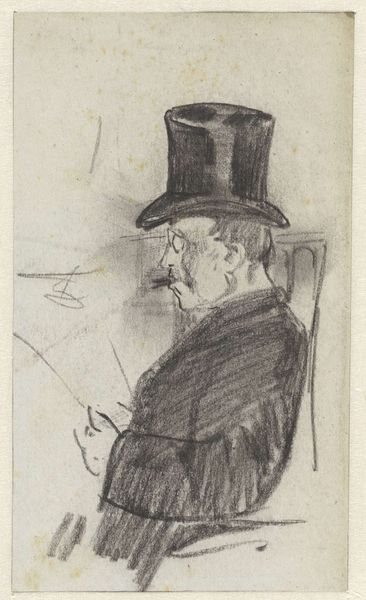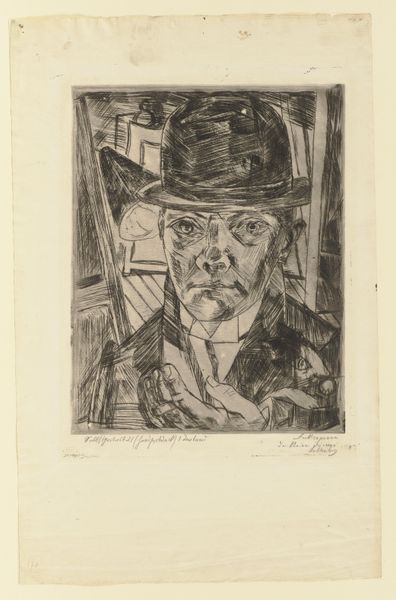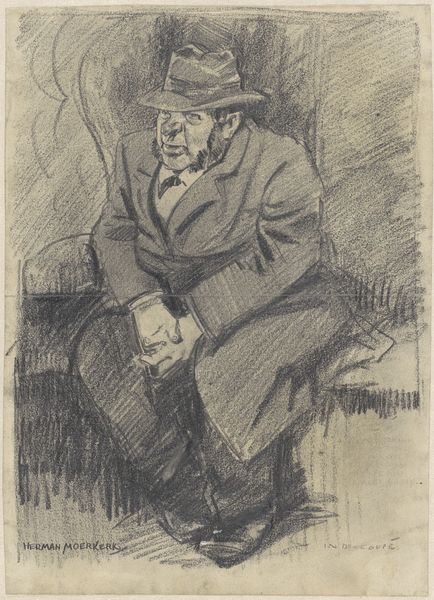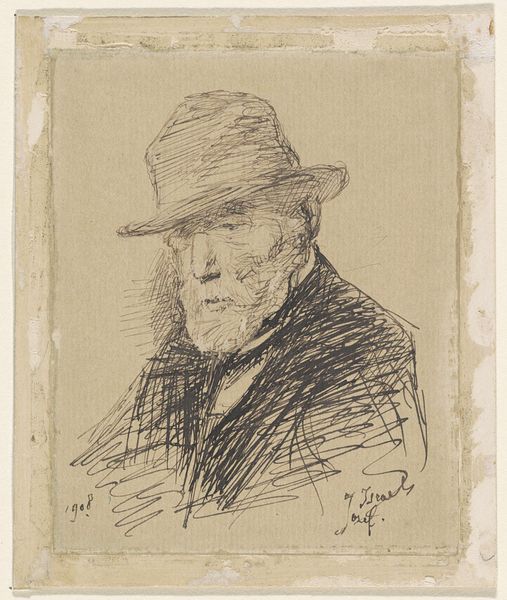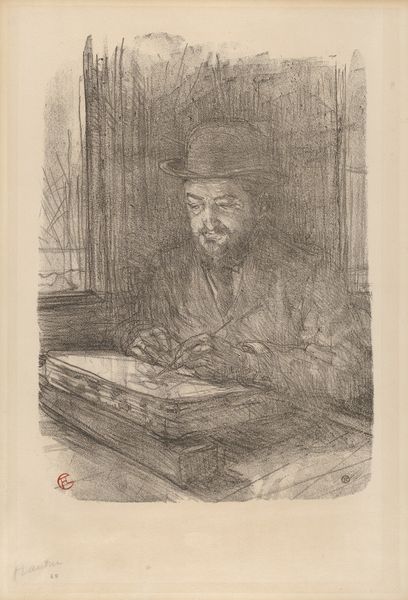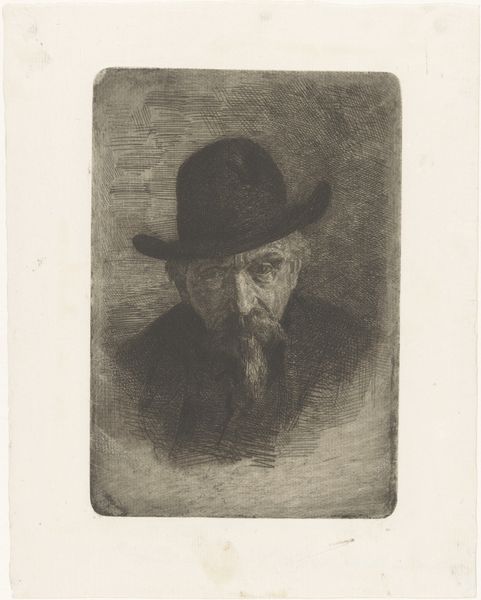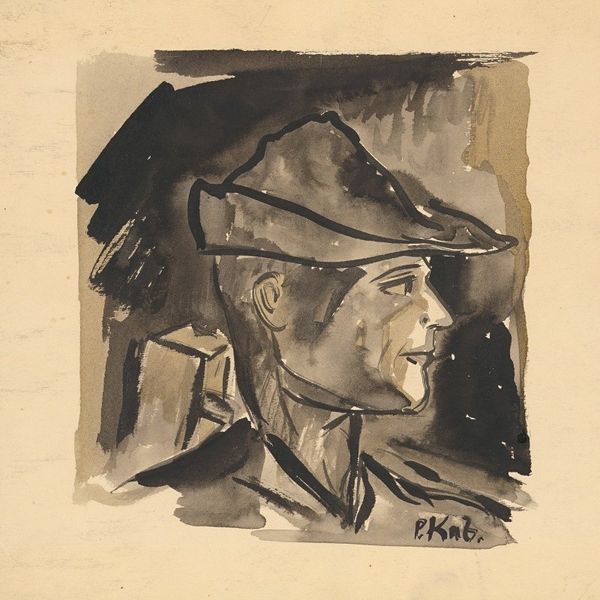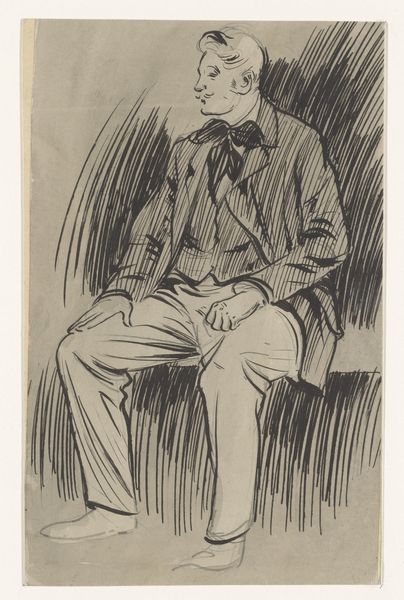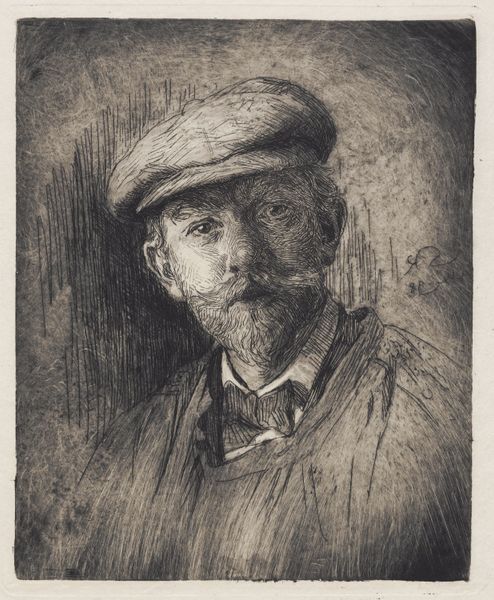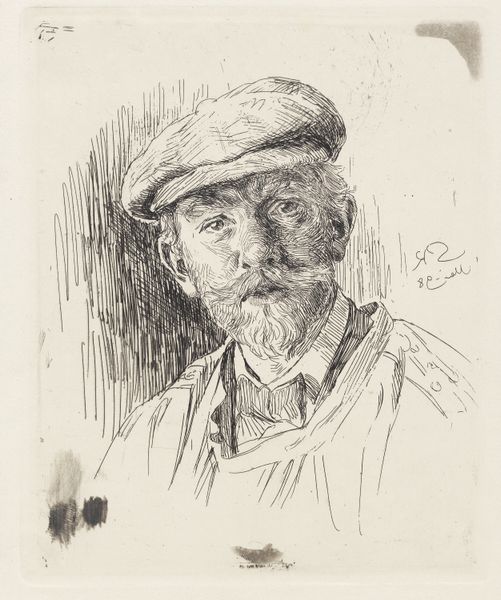
Dimensions: height 354 mm, width 253 mm
Copyright: Rijks Museum: Open Domain
Curator: Gerrit Willem Dijsselhof created this work titled "Zittende man met hoge hoed in een café," sometime between 1876 and 1924. It’s currently held in the collection of the Rijksmuseum. It’s a watercolor painting portraying exactly what the title suggests. Editor: The tones are surprisingly muted, and a little melancholy. There is something in the contrast between the formal attire and the fluid medium that unsettles the eye. Curator: Absolutely. Consider how the rapid application of watercolor lends an immediacy, a certain sketch-like quality despite the sitter's bourgeois trappings. What does that juxtaposition suggest to you about the accessibility and intended audience for this type of portraiture? It looks like the artist could easily pack the tools for his craft and then rapidly generate works for any individual, anywhere. Editor: The piece hints at deeper themes about class and performance. This solitary figure, probably middle class and likely a patron of the arts, seeks perhaps escape or anonymity in the dark corners of this café setting, yet still upholds rigid codes of dress, which were used to project and maintain their social class in everyday settings. It begs us to question whether we can interpret the sitter's face as displaying disillusionment or maybe merely reflecting the environment. Curator: Or are we too quick to impose that interpretation? We can speculate that he wanted to showcase some sort of ennui but perhaps we would know more if we examine the materiality of the paint. We know this period coincided with shifts in the manufacture and availability of paint; did artists like Dijsselhof democratize artmaking simply because the tools of their trade were cheaper and easier to produce, allowing an engagement by wider segments of society? Editor: True, although it is also important to look at it through a lens of socio-economic power dynamics and race. Access to artmaking and leisure has always been unevenly distributed and marked by gendered access to those materials. There might also have been considerations of class that the artist wanted to reflect in this representation of a social space. Curator: Well, regardless of our conclusions, examining art from various vantage points, considering material, medium, class, and consumption leads to richer insight for all of us. Editor: Agreed. And considering how contemporary dynamics shape how we relate to both artists and artwork can allow for greater audience participation in both enjoying and understanding art's critical importance.
Comments
No comments
Be the first to comment and join the conversation on the ultimate creative platform.

